#Top Medical schools in Africa
Explore tagged Tumblr posts
Text
Top Medical Schools in Africa, African Medical Schools, Best medical universities in africa
Introduction
Africa has several renowned medical schools that have carved a niche in the global medical community. These institutions offer world-class education, state-of-the-art facilities, and experienced faculty, attracting students from across the continent and worldwide. Let’s delve into some of the top medical schools in Africa and discover what sets them apart.
Texila American University, Zambia

Studying at TAU is relatively affordable, especially compared to other top medical schools worldwide. It can be a significant factor for students considering their financial options. TAU is a leading research university with a strong focus on innovation and discovery. It allows students to be involved in cutting-edge research and to make a real difference in the world.
University of Cape Town

In addition to its academic excellence, UCT is also known for its global recognition. The university is a member of the prestigious Association of Commonwealth Universities, and its alums include Nobel laureates, world leaders, and business executives.
Makerere University
Makerere University, located in Uganda, is a renowned medical institution with affordable tuition fees and exceptional clinical exposure. Students have access to numerous affiliated hospitals, providing ample opportunities for practical experience. The university’s medical degrees are internationally recognized and ranked by the WHO. Indian students interested in studying MBBS here can opt for English medium courses, eliminating language barriers. With limited class sizes, students receive personalized attention from teachers. Additionally, the university offers comfortable hostel accommodations, ensuring a pleasant stay for students.
University of the Witwatersrand
The University of the Witwatersrand (Wits University) is a public research university in Johannesburg, South Africa. Wits University’s medical school was founded in 1922 and is one of Africa’s oldest and most prestigious medical schools. The school offers undergraduate and postgraduate medical programs and is home to several world-renowned medical researchers.
Medical students at Wits University can access state-of-the-art facilities and resources. The Donald Gordon Medical Centre is a renowned teaching hospital located in South Africa. It is widely recognized as one of the country’s largest and most prestigious medical centers. The school also strongly focuses on community health, and its students are encouraged to participate in outreach programs in underserved areas. Wits University designs the medical curriculum to produce well-rounded doctors, critical thinkers, and leaders in their field. It is constantly updated to reflect advances in medical knowledge and technology.
Cairo University
Cairo University (CU) is a public research university in Giza, Egypt. It is the oldest and most prestigious university in Egypt. It is consistently ranked among the top universities in Africa and the Middle East. CU offers various undergraduate and postgraduate programs across multiple disciplines, including science, engineering, medicine, law, business, and the humanities. The university’s faculty are internationally renowned scholars and researchers, and CU’s students come from worldwide. Cairo University has state-of-the-art facilities and resources, including libraries, laboratories, and computer centers. It ensures that students have the tools they need to succeed.
Sub-Saharan African Medical Schools
Sub-Saharan African medical schools encompass diverse institutions dedicated to producing skilled healthcare professionals. These schools play a crucial role in addressing the region’s healthcare challenges. Their emphasis on community engagement and research contributes significantly to improving healthcare outcomes. Many sub-Saharan African medical schools, such as the University of Lagos, the University of Zimbabwe, and the University of Dar es Salaam, have gained recognition for their academic excellence and commitment to quality education. These institutions equip students with the necessary skills and knowledge to effectively meet their communities’ healthcare needs.
These schools serve as catalysts for positive change and contribute to the overall development of healthcare in the region. Discover healthcare education opportunities in Africa. Find your ideal institution with African Medical Schools.
Importance of Quality Education
Quality education is of paramount importance in the field of medicine. It ensures that healthcare professionals receive comprehensive training and acquire the necessary knowledge and skills to provide excellent patient care. A solid educational foundation enables medical professionals to make informed decisions, diagnose accurately, and apply the latest advancements in medical science. Quality education equips students with critical thinking and problem-solving abilities, enabling them to adapt to the dynamic healthcare landscape.
It also fosters a commitment to lifelong learning, encouraging healthcare professionals to stay updated with emerging trends and research. Additionally, quality education promotes ethical practice, professionalism, and patient-centered care, instilling values vital to the healthcare profession. Investing in quality education creates a sustainable healthcare system and positively impacts the overall well-being of individuals and communities.
Conclusion
In conclusion, the top medical schools in Africa offer a gateway to quality education and global recognition. These institutions provide aspiring medical professionals with the necessary knowledge, skills, and practical experience to excel in medicine. From South Africa to Uganda, Egypt to Nigeria, these medical schools have established themselves as pillars of excellence, producing competent healthcare professionals who contribute to improving healthcare systems in Africa and beyond. Studying in Africa can offer students the opportunity to experience a diverse learning environment, utilize modern facilities, and learn from seasoned faculty members, all of which can benefit their education. Embarking on a journey at one of Africa’s top medical schools is a stepping stone towards a fulfilling medical career with a positive impact on individuals and communities.
0 notes
Text
0 notes
Text
Best School of School of Social Sciences in Kenya - Mount Kenya University
Mount Kenya University School of Social Sciences comprises the departments of Psychology, Humanities and Languages; Social and Development Studies; Journalism and Mass Communication; and Institute of Security Studies, Justice and Ethics.
We cultivate the ability of students to think critically, conduct research and draw logical conclusion while at the same time expressing their thoughts effectively, with the overall intention of providing them with learning experiences to position them to serve and function in a dynamic global environment.

#Law program in kenya#E-learning portal in kenya#Mku academic programmes#Top reasons to join mku#Top medical schools in east africa#Best diploma courses in kenya
0 notes
Text







Happy birthday to former formula one racing champion Jackie Stewart.
Born John Young Stewart in Milton Dunbartonshire in 1939, Jackie, as he became known, attended Hartfield primary school in the nearby town of Dumbarton going on to the local academy in the town.
Jackie experienced learning difficulties owing to undiagnosed dyslexia , and due to the condition not being understood or even widely known about at the time, he was regularly berated and humiliated by teachers and peers alike for being “dumb” and “thick". Stewart was unable to continue his secondary education past the age of 16, and began working in his father’s garage as an apprentice mechanic. He was not actually diagnosed with dyslexia until 1980, when his oldest son Mark was diagnosed with the condition. On learning that dyslexia can be genetically passed on, and seeing very similar symptoms with his son that he had experienced himself as a child, Stewart asked if he could be tested, and was diagnosed with the disorder, by which time he was 41 years old. He has said: “When you’ve got dyslexia and you find something you’re good at, you put more into it than anyone else; you can’t think the way of the clever folk, so you’re always thinking out of the box.“
Jackie began testing race cars in 1961. Showing his skill and raw pace, Stewart quickly worked his way up the ranks before grabbing s drive in the 1964 Formula Three Championship for Tyrell. In his debut race at Snetterton, Jackie pulled out a 25 second lead within two laps and went on to win the race comfortably, 44 seconds in front of his closest rival. Becoming a Formula Three Champion on his debut season, the offers from Formula One came thick and fast. Discussing how he maximised success at every opportunity in the early stages of his career, Jackie delivers thought provoking ideas as an after dinner speaker that are relatable to sporting and business environments alike.
Jackie’s first race in an F1 car was for Lotus in December 1964 in South Africa, by the end of his first season, Stewart had finished his rookie season third in the World Drivers’ Championship, proving his potential as a future World Champion.
1966 triggered Jackie’s lifelong fight for better safety in his sport. Following a crash at the 1966 Belgian Grand Prix, Jackie was left trapped in his overturned BRM soaking in fuel. With no tools to help him, stewards had to wait for other drivers Hill and Bondurant to help after borrowing a spanner from a spectator. From now on, Jackie would tape a spanner to his steering wheel, travel to races with his own doctors whilst his team supplied a medical truck for the benefit of all. A hugely passionate subject for Jackie, driver safety can feature heavily in his talks as a motorsport speaker. The harsh reality of danger in his day makes for a compelling insight into the sport and how far things have come since then.
Stewart became Formula One World Champion in 1969 in a Matra MS80 before going on to win the 1971 and 1973 World Championships for Tyrell. A hugely talented racing driver, Jackie left a legacy of increased in-car safety as well as drastic improvements to the layout and design of tracks, all in the name of limiting risk to drivers.
Stewart’s crash helmet was white, with the red, green, blue, white and yellow Stewart Royal Tartan surrounding the top.
In 2021 Jackie set up the charity Race Against Dementia. In 2016 his wife Helen was diagnosed Frontotemporal dementia, he believes that the application of Formula1’s technology and out of the box thinking could bring about earlier solutions to society coping with dementia. The couple are childhood sweethearts and have been married since 1962. Jackie spoke about his friend, Sean Connery, revealing that he had been ravaged with dementia during his final two years of his life. Jackie admitted last year that every time he forgets something like a name, he worries it is the onset of dementia.
If you are around Dumbarton tomorrow get yourself down to Levengrove Park as they host walk for Sir Jackie's birthday. Participants will gather for a Dementia Friendly Walk, with the route around Levengrove Park measuring 1973 metres.
This distance symbolises 1973, the year Sir Jackie, won his third and final F1 World Championship. The walk will not only be a tribute to the icon, but it will also serve to raise awareness for his charity, Race Against Dementia. Interested participants should gather outside Levengrove Pavilion from 10.45am.
The walk will begin at 11am and participants can enjoy refreshments served afterwards.
The park's trails, which are suitable for wheelchair users, will be used for the walk.
There is no need for advance registration and participants can show up on the day if they wish to participate.
The route can be viewed at https://www.mapmyrun.com/routes/view/5619297865.
As a tribute to Sir Jackie, famed for wearing a Stewart tartan band on his racing helmet, participants are urged to wear a bit of tartan.
13 notes
·
View notes
Text
First Impression: Love is Panacea

I have just finished the first 4 episodes of the drama on Youkou. It took me over an hour to get the app to take my money, so this better be worth it.
The drama is project for Literature and Art of the Sichuan province and co-produced by Youkou and CCPTV. Therefore, we can expect a lot of national propaganda in the show, especially since it’s not only a medical drama, but also about international medical aid and foreign aid. Lou Yunxi seems to really take his nickname as Sichuan ambassador seriously! ;-)


Cast and Characters (so far)
Zhang Rua Nan as Su Weian: A medical school dropout on a quest to enjoy her life, struggling to make ends meet overseas. She becomes a translator at the local Chinese Medical Aid hospital.
Luo Yunxi as Dr. Gu Yun Zheng: A passionate but cold doctor working in Chinese Medical relief/aid in North Africa. He is Su Weian former teacher. He is initially very skeptical of the FL intentions and abilities.
Wang Yiting as Jiang Muying: Su Weian’s best friend, that travels to see her after a long time.
Li Jiahao as Fang Mingfan (Nian Baiyu!) doctor and assistant and love interest of Jiang Muying. I expect them to be the 3rd couple of the show.
Shawn Wei as Dun Yuncheng: As the CEO of a pharmaceutical company. He had a one-sided crush on the FL and is the half brother of the ML. We haven’t seen them interact in the present yet, but there is a nice build up to an interesting dynamic.
Mild Spoiler
The first arc of the show takes place in a small city in North Africa. Foreign actors in Chinese Dramas are always … something, and this is no difference. The dubbing is also noticeable different compared to the rest. I do, however, like how the show approaches different languages and the language barrier. Dr. Gu only speaks Chinese and English and needs a French translator to communicate with patients and staff – this is where Su Weian comes in.
There is a lot of unintended comedy, because of the way they are depicting the foreign country. While some is just silly – for example the way they are throwing $ bills around as if it was Yuan, other times it relies too much on exoticism. So far, they haven’t crossed the line to straight out racist stereotyping, so that’s something. It does, at times, make a lot of the scenes feel over the top and cringe. However, no matter the country of origin, very rarely do productions get other languages and culture right. China in Western media is often just horrible, so I’m not going to hold it against them. The medical stuff is also mostly fine, it’s not accurate, but it’s not so wrong, that I’m getting angry. So the framing of the show is okay, I think it will get better once they are back in China.
Dr. Gu is a typical character played by Luo Yunxi: Serious, passionate, troubled and very in love with a woman. He excels in this role, as always. His English is also amazing! Su Weian is so far the more interesting character. She is everything I want from a FL: strong, independent, witty and smart. So far, we were only introduced to 3 side characters, that have not shown any depth yet. I’m just really happy to see Tantai Jin and Nian Baiyun reunite on screen – still being master and assistant. I do miss their costume so, because the styling in this show is… different.
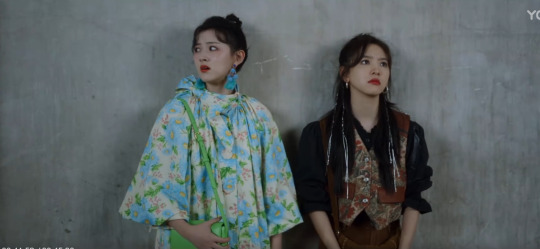
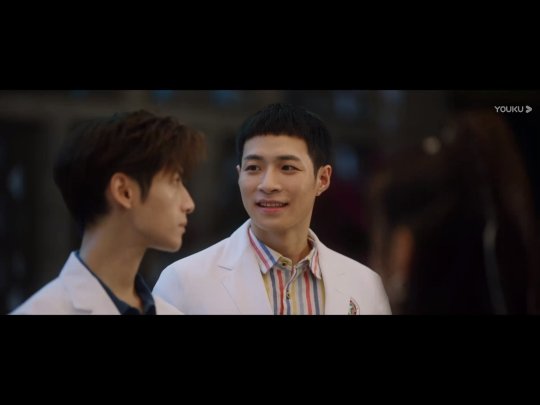
The cast of the show is so far the best part. While the script relies on a lot of cliché tropes, it’s the dynamic between the actors, that make the show engaging. I’m rather pessimistic about the script so far, it might end somewhere between “Lie to Love” and “Broker”. However, the acting and the chemistry between the leads is significantly better!
One of my favorite things is, how self-aware the show is at times: Be it the supporting cast admitting being the side characters of the leads' life, the subverting of stereotypes of Chinese eating strange things like insects or the nurses watching costume dramas on the Youkou apps and taking dating advice from it. So I’m holding out hope that the overly cliché romantic tropes are an attempt to mislead the audience into thinking this is just a romantic show.


I’m going to talk about the ending of the show next. Please just stop reading here, if you don’t want to get spoiled!
Major Spoiler
On a personal note, I was misdiagnosed with a deadly disease earlier this year. While I’m incredibly lucky, that it turned out a misdiagnosis, for a couple of months I had to live with the belief that I was going to die early and in a lot of pain. So this show hits on a different level and that's why it’s important to me, that the novel ending stays the same. (Spoiler!!)
I’m a bit nervous about it, because not only did they cut out 6 full episodes, they also changed the name to “Healing Lover”. I don’t want the FL to be healed. There is no cure for her disease in real life, so there shouldn’t be one in the drama. Suffering from life altering disease is part of many people's life, that affect not only them, but also their family and friends. It would feel insulting, if they change it. I want to see a drama, in which the cast has to come to terms with the FL death. I want her husband and son to find a way to cope and live on. I want maximum angst. No rainbow at night.
23 notes
·
View notes
Note
So I got the idea to actually calculate the global human population myself, city by city, and guess what.
It’s not even 3 billion.
Not even CLOSE.
There are NOT 7 billion people on the planet. You can count yourself. The overpopulation hoax is the foundation of the globalist terror regime.
Whether it's three or seven billion, the global population doesn't matter. Overpopulation is a regional problem. There are starving children with distended bellies running around in Africa and India, and yet I suspect those places aren't handing out free birth control and running article after article about how "Cats are Better Than Babies".
The globalist terror regime is focusing that on first world nations while flooding every good place to live with problem people. Here in the US, every country south of us is clearing out their prisons and mental hospitals then sending them right up to us in large caravans of tens and hundreds of thousands of people. It's white privilege to have a job with a living wage, medical benefits, etc. We need to let everybody in so large corporations don't have to send their companies to China. The whole planet should be one huge sweat shop.
Speaking of white privilege, I have an OT beef. A few days ago, a fourteen-year-old student at Apalachee High School named Colt Gray brought a semi-automatic weapon to school and shot a bunch of people before being detained by police. According to the wiki, the school is in a town that's 58% white where half the students are economically disadvantaged. Colt Gray was one of these students. His mom was a low life drug addict who was arrested for "domestic violence, drug possession, property damage and various traffic violations, including driving under the influence charges. She also faced civil fraud charges over the purchase of a used vehicle and was locked up in Ben Hill County as recently as April."
Colt Gray ended up a Kamala Harris supporting trannie who was probably bullied at school on top of having a dysfunctional family. They tried to wipe his online presence, but it's being passed around.
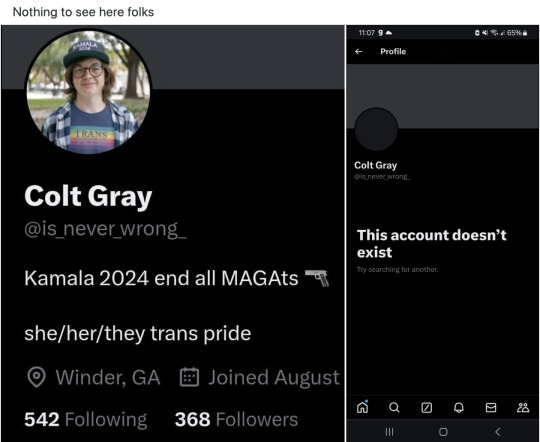
It looks like he lived with his dad who was also abusive, and now the dad is being arrested for giving the shooter the weapon he used as a Christmas present last year. This is the second time I've heard of this happening. The first time is when the parents of school shooter Ethan Crumbley were charged with manslaughter in April 2024 because they supposedly also supplied the weapon used.
Now I can see why people would think this was appropriate. Terrible parents who raise a kid wrong should be held accountable for setting a monster loose in the community, and yet this only seems to be a white issue. I've yet to see a black parent be held responsible for her child's actions. Black people have an 80% out-of-wedlock birth rate and fatherless household rate. They make up 13% of the population but commit 90% of gun crimes, 90% of adolescent gun crimes and most of the mass shootings. The news only focuses on the rare white person committing a mass shooting and acts like it's an epidemic, even though black people are shooting up every major city every day of the year.

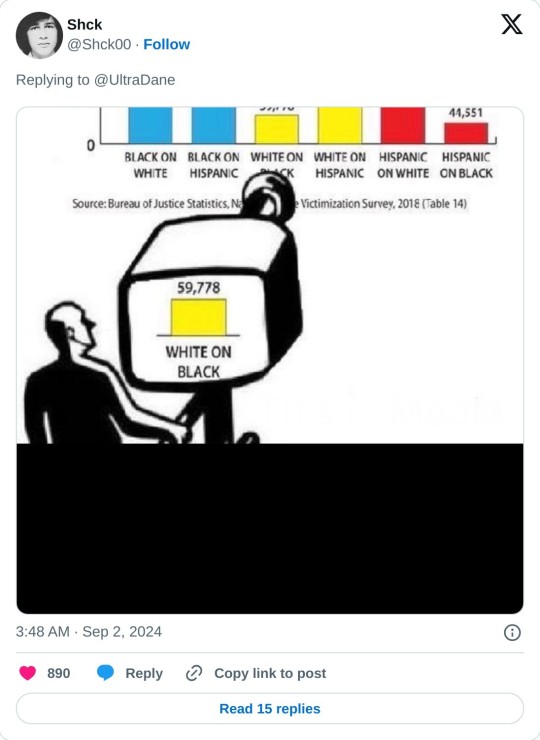
You aren't even supposed to question this. Black people problems are the result of white privilege and 'them evil colonialists who brought crop rotation and modern medicine to the third world' blahblahblah. Black people who aren't qualified to run a hotdog stand at a little league game are supposed to be able to lecture white people endlessly, and yet we aren't allowed to say, *lifts finger* uh um.....maybe if you waited until you were married to pop out babies, then maybe your atrocious crime rate would go down. Srsly, we're dealing with the problems of people in generational poverty who have like a 10% literacy rate, and the media keeps beating it into our heads that all the problems of the world are caused by white people, and it's only white people who need to have fckn dogs-cats-rats-smelly horses instead of babies.
Another meme they're always pushing in the media is that 'right wing extremism is the biggest domestic terror threat' and that all mass shooters are right wing (laughably ridiculous). Then when a radicalized Marxist trannie like Audrey Hale shoots up a white Christian school, it takes literal years for the authorities to release the manifesto. It's supposedly a danger to the public. When we finally get to read it, it's nothing but the ramblings of a mentally ill radicalized Marxist who complains over and over that nobody loves them, and that's why they have to kill a bunch of white Christian kids because the media beat it into their deranged mind that white Christians are the cause of all their problems.
#over population#marxism#leftist culture#globalism#colonialism#mass shooters#colt gray#media bias#twitter#audrey hale#school shooters
5 notes
·
View notes
Text
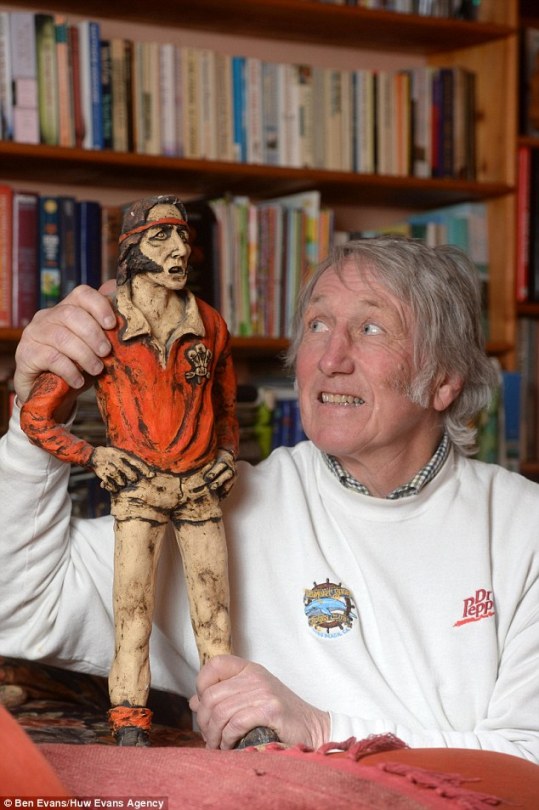
In the closing minutes of Wales’s Five Nations meeting with France at Cardiff Arms Park in March 1976, the home side were resisting an onslaught by the visitors when the French wing Jean-François Gourdon found some space on the touchline by the north stand. Gourdon was then hit by a shuddering shoulder charge from Wales’s full-back, JPR Williams, that all but sent him spinning into the crowd. Williams raised his fist in triumph and Wales held on to win 19-13 and complete a seventh grand slam.
In truth, Williams’s tackle was far from legal, but the incident remains an indelible image in the minds of Welsh rugby supporters – that and a photograph of the Bridgend No 15 with blood pouring from his face after being trampled by a visiting All Blacks boot. International rugby in the 1970s was not for the squeamish, and JPR survived by being not just supremely skilful, but as hard as nails.
Williams, who has died aged 74 from bacterial meningitis, would forever be known as JPR, the three most evocative initials in the sport. Only France’s Serge Blanco could rival him as the greatest full-back in history. When the law-makers of the international board prevented the ball from being kicked directly into touch in 1968 it gave the opportunity for Williams and others such as Scotland’s Andy Irvine to forge a template for how a modern attacking full-back should play.
The source of Williams’s famous hardness is surprising. Unusually for top-class players in Wales, he came from a comfortable middle-class home. Williams once told of how he turned up at a Wales Schoolboys’ trial in a Rolls Royce. His upbringing, he said served as an incentive “to prove to my mates that I was tough and one of them”.
John Peter Rhys was born in Bridgend to Peter and Margaret, both doctors. Margaret had been born in Rochdale, so young John could have played for England, but that was not a subject much discussed in the Williams household.
It was on the lawns of Wimbledon rather than the muddy fields of Cardiff Arms Park or Bridgend that Williams first made his mark as a sportsman of renown. As a 17-year-old, he won the 1966 British junior tennis title at Wimbledon, beating David Lloyd in the final.
He was gaining a reputation at rugby in Bridgend, where his father was the club president and doctor. By this time Williams had left Bridgend grammar school for Millfield school in Somerset, where future Wales scrum-half Gareth Edwards was a pupil.
From Millfield, Williams went to St Mary’s hospital in London and had a spell at the London Welsh club. He chose to continue playing the amateur sport rather than tennis and concentrate on his medical studies, his father having told him that he would not make a living as a professional sportsman.
He was still a teenager when he was called into a Wales squad to tour Argentina in the summer of 1968. There were great expectations of the new boy John Williams, as he was then known, when he made his full Wales debut against Scotland at Murray Field the following February.
Wales had a new coach, their former captain Clive Rowlands. Barry John at fly-half scored the final try in Wales’s 17-3 win. Something was brewing in Wales and the 70s were a golden age. Once Phil Bennett, alongside Edwards, established himself as Barry John’s natural heir and once JPR was joined by the wings JJ Williams and Gerald Davies, Wales became an unstoppable force in northern hemisphere rugby. At the heart of their team was JPR, instantly recognisable with his Elvis-Presley style sideburns, flowing hair and socks often pulled down to his ankles.
What set him apart was his success as an attacking player which, allied to that rock-solid defensive play, made him a permanent fixture in the Wales side between his 1969 debut and 1981, when he retired from international rugby. He burnished his reputation on the successful British Lions tours to New Zealand in 1971 and South Africa in 1974, playing in all four Tests on each. Williams had been on a Wales tour to New Zealand in 1969 when they were humbled by the All Blacks in two Tests so the 2-1 series win by the Lions two years later came as a big relief.
In Auckland he settled the series with a long-range drop-goal in the final Test. It came as a surprise to his team-mates, but England’s Bob Hiller, his full-back understudy on that tour, had apparently joked to him that he could not consider himself a proper international until he had dropped a goal.
In South Africa three years later, Williams was heroic again as Willie John McBride’s team prevailed in an often brutal series win over the Springboks. The Lions’ call of “99” often signalled all-out punch-ups, and the sight of Williams racing upfield to thump the much larger South African lock Moaner van Heerden was a memorable one, though, as Williams confessed later it was not something of which he was particularly proud.
Williams won 55 caps for Wales, five of them as captain in 1978-79; in 1977 he was appointed MBE. In between those Lions victories he scored the final try in the Barbarians’ famous victory over the All Blacks at the Arms Park in 1973, and after retiring from the international stage played club rugby for Tondu as a back-rower until 2003, when he was 54.
He met Scilla (Priscilla) Parkin at medical school, and they married in 1973. His principal post as a trauma and orthopaedic surgeon was at the Princess of Wales hospital, Bridgend (1986–2004). Williams rarely joined the ranks of retired players who became pundits, but he was always happy to talk about a stellar career, particularly the 11 games against England, in which he always ended on the winning side.
He is survived by Scilla and their children, Lauren, Annie, Fran and Peter.
🔔 John Peter Rhys Williams, rugby player and orthopaedic surgeon, born 2 March 1949; died 8 January 2024
Daily inspiration. Discover more photos at Just for Books…?
9 notes
·
View notes
Note
1: Kitchen Counter, Couch, or on top of the dryer?2: Your last sexual encounter: Good or Bad and why:
Things That Make You Squirm || Accepting

"I said you could aks me a question, an' dat's technically two.” Of course she’s ribbing him, and will continue to do so because she’s trying to make him laugh. She never sees him do that. “First answer…depend on wha’ I’m doin’ right? Kitchen counter for makin’ san’wish, or salad, or openin’ a can of cat food for a particularly greedy boy who know beddah dan t’ jump up on it. Couch f’ watchin’ tv, playin’ games, readin’, knittin’, nappin’. I mean dat really is da mos’ versatile. Also, no tell da dryer, but it makes beddah place t’ fold laundry, too. Speakin’ of which, you should go pull yours out of it. So I can put mine in. An’ dryer is bes’ place t’ get naked cause ya don’ wanna wear your scrubs for one more minute an’ heaven f’bid you strip out of dem once you get inside because your braddah will start screamin’ at you like you’re guilty of committin’ war crimes. An I mean…if you’re inside ya own hale, den who cares if ya in ya underwear?” She half grins but then it dies, not only on her lips but in her eyes and she hides it away by picking up the laundry basket with the sheets and towel, padding barefoot down the hall toward the laundry room. Her loft is the size of literal mansions, the whole place takes up the entire fifth floor of the six story building that she and Andy own. Her only roommate is her brother. They’ve mentioned maybe letting him take one of the open units below, but first they want to make sure there aren’t any legal problems. Her already small voice is even softer now. “Las’ sexual encountah legitimately was…almos’ ten years ago. I uhm…I was in med school. I’d managed to match at my teaching hospital, an’ was lucky enough to have my favourite teacher be my mentor. Now in my own defense, he was probably da first man who wasn’t Andy an’ wasn’t a shark, dat I ever fell in love wi’. An’ after spendin’ so many years at his side, learning an’ growin’ an’ becomin’ friends…I had a fantasy. I…I tried to explore dat fantasy on my own…” Her normally preternatural grace is lacking as she drags things from the washer and putting it in a second, empty basket. It’s almost angry. What it really is though is embarrassment. One stupid mistake that changed the entire course of her life and only managed to make the Admiral disdain her further. “I dunno if it’s because I did it wrong, or if I’m jus’ not capable of actually uhm…you know. What happens when ya done…doin’ dat… But I made da mistake of writin’ it down in my journal. An’ next time I had t’ present my notes to a room full of med students and doctahs? Someone had slipped in da wrong slides into my presentation. I stood dere talkin’ about kids wi’ cancer, an’ behind me, every feelin’ and every uhm…physically romantic thought I had about his hands and his mouth…right behind me in big bold lettahs.” She laughs but there’s something very broken about it. “An’ dat is da day I quit medical school t’ become a nurse somewhere away from him, an’ how I decided sex is not somet’ing I really need or want. And discovered dat Africa was a very beautiful an’ culturally diverse place.”
#Mahalo!PM <333#Chasing Rabbits|Nate Jacobs#Talking Backwards|Nate and Beth#Don't Ask Alice|Euphoria AU#Brooklyn Stories|New York#Lost in Translation || N S F W
3 notes
·
View notes
Text
Jayesh Saini: A Leader in Shaping the Future of Healthcare and Public Health
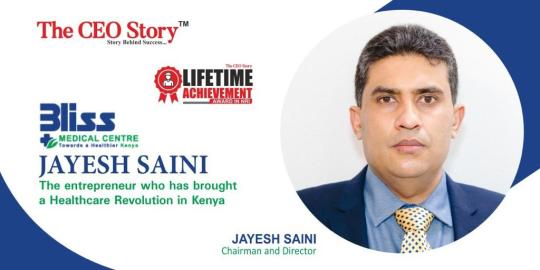
Jayesh Saini, a prominent leader in healthcare innovation, has dedicated his career to improving healthcare systems across East Africa. His approach is rooted in collaboration, focusing on building partnerships with governments, NGOs, and the private sector to address the region’s healthcare challenges. Through his leadership at LifeCare Hospitals, Saini is spearheading a movement to make healthcare more accessible, efficient, and sustainable for underserved populations. This article examines Saini’s commitment to advancing public health and how his strategic collaborations are redefining healthcare delivery across East Africa.
Collaboration as the Foundation for Sustainable Healthcare
The healthcare challenges faced by East Africa are vast and varied, ranging from inadequate infrastructure to limited access to medical professionals and services, particularly in rural areas. Jayesh Saini recognizes that the only way to tackle these complex issues is through collaboration between diverse stakeholders.
Saini has worked diligently to bring together governments, NGOs, healthcare providers, and international organizations. By aligning LifeCare Hospitals' objectives with national healthcare initiatives, such as Universal Health Coverage (UHC), Saini ensures that public health initiatives are both inclusive and sustainable. His focus is on creating a healthcare ecosystem where both public and private sectors contribute to reaching vulnerable populations and improving health outcomes.
Healthcare is a basic human right. Bringing together the expertise and resources from all sectors is the only way to ensure that everyone, no matter their location, has access to the care they need, says Jayesh Saini.
Strengthening Healthcare Infrastructure Across the Region
A significant pillar of Jayesh Saini’s vision is the enhancement of healthcare infrastructure. Through LifeCare Hospitals, Saini has invested heavily in establishing modern medical facilities across East Africa, equipped with state-of-the-art technology and offering a broad spectrum of healthcare services—from general care to specialized treatments, diagnostics, and surgery.
His infrastructure development goes beyond building hospitals; it focuses on creating a healthcare network that reaches rural and underserved areas. By strategically placing healthcare facilities in remote regions, Saini is addressing the geographical challenges that have long hindered access to quality healthcare.
Furthermore, Saini’s investment in health information systems, such as Electronic Health Records (EHRs), is improving the efficiency and accuracy of healthcare delivery. These systems allow for better patient tracking and care coordination, ensuring that patients receive timely and effective treatment, while healthcare providers can make more informed decisions.
Building robust healthcare infrastructure is about more than just facilities; it's about creating a sustainable healthcare ecosystem that delivers quality care to those who need it most, says Jayesh Saini.
Tackling the Shortage of Healthcare Professionals
One of the most pressing issues in East Africa is the shortage of healthcare professionals. Jayesh Saini has made it a top priority to address this shortage through targeted training and retention initiatives. Through partnerships with medical schools and training institutions, LifeCare Hospitals provides internships and hands-on training opportunities to medical students, ensuring that they are equipped with the necessary skills and experience when they enter the workforce.
To retain skilled healthcare workers, Saini has implemented strategies to offer competitive salaries, career development opportunities, and a supportive work environment. This not only ensures that LifeCare Hospitals have access to top talent but also contributes to the broader goal of strengthening the healthcare workforce across the region.
Investing in the development of healthcare professionals is crucial for creating a sustainable healthcare system. The future of healthcare in East Africa depends on the people delivering it, says Jayesh Saini.
Embracing Innovation for Better Healthcare Access
Innovation lies at the heart of Jayesh Saini’s strategy for improving public health. One of the most transformative innovations he has introduced is the widespread use of telemedicine. This technology has been a game-changer for East Africa, where geographical barriers often prevent people in remote areas from accessing healthcare services. Telemedicine enables patients to consult with doctors remotely, eliminating the need to travel long distances and ensuring that timely medical interventions are available.
In addition, Saini has pioneered the use of data-driven healthcare solutions to improve public health outcomes. By analyzing health trends and monitoring data in real time, LifeCare Hospitals can respond to emerging health issues and allocate resources more effectively, ensuring that healthcare interventions are targeted and impactful.
Innovation is essential for overcoming the challenges we face in healthcare. By harnessing technology and data, we can make healthcare more accessible, efficient, and effective, says Jayesh Saini.
Read more At: https://www.aninews.in/news/business/jayesh-saini-transforms-kenyas-pharma-industry-with-dinlas-pharma20240829161432/
0 notes
Text
Empowering Africa’s Future Leaders: The JAN Scholarship Program’s Vision for Tomorrow

In a small Kenyan village, Amina once studied by a flickering lamp, dreaming of becoming a doctor who could bring advanced healthcare to her community. Without resources, her dream felt distant. Across Africa, Kofi from Nigeria shared a similar ambition, envisioning innovative renewable energy solutions to power remote villages. For both, these dreams seemed like visions of a far-off future—until the Joint Africa Network (JAN) Scholarship Program stepped in.
JAN is reshaping futures by providing scholarships to talented African students, particularly in fields like medicine, technology, and engineering. The program doesn’t just offer financial aid; it opens doors to global networks, mentorship, and hands-on experience. JAN’s commitment is more than educational; it’s a launchpad for young Africans to lead transformative projects that reshape communities across the continent.
Today, Amina is studying at a top medical university in South Africa. Through JAN, she’s designing a telemedicine project that connects her village to healthcare resources via mobile technology. Her ambition? To scale this model across Africa, bringing medical care to even the remotest regions.
Kofi, now at a leading engineering school in Europe, is developing AI-driven solar panels tailored for African villages, adaptable to weather and energy needs. Backed by JAN, he’s piloting his solution in Nigerian villages, providing power to communities that need it most.
The JAN Scholarship Program is building a network of alumni and experts, empowering them to create sustainable change and drive Africa forward. Each scholar’s journey is part of a shared vision: a future where Africa’s young minds lead in innovation, self-sufficiency, and growth. Through JAN, they aren’t just students, they’re the architects of Africa’s future.
0 notes
Text
Université d'Abomey-Calavi Faculté des Sciences de la Santé
Learn about Université d'Abomey-Calavi's renowned Faculté des Sciences de la Santé, a top medical institution in West Africa. Find detailed school information, free medical resources, and exam prep tools at MyMedSchool.org, your go-to platform for aspirin
Mymedschool ID MD.BJ.005 FAIMER ID F0000249 Alternate names Université Nationale du Bénin Département des Sciences de la Santé (1975 – 2001) Additional information School website In French School Contact [email protected] +229 (21) 36-00-74 01 BP 526Cotonou Benin Accredited by – Basic Sciences Anatomy Physiology Biochemistry Pathology Clinical…
0 notes
Text
The Ultimate Guide to the Cost of Medical School in Africa

Introduction
Africa is home to some of the best medical schools in the world, but the cost of attending medical school can vary greatly depending on the country and the school. In this article, we will discuss the cost of medical school in Africa, including tuition fees, living expenses, and financial aid options.
Tuition Fees
The cost of tuition fees for medical school in Africa can vary greatly. In general, tuition fees are higher in private universities than in public universities. The most expensive medical schools in Africa are located in South Africa, where tuition fees can reach up to $4200 per year. The least expensive medical schools in Africa are located in Uganda, where tuition fees can be as low as $18,870 per year.
Living Expenses
In addition to tuition fees, students also need to factor in the cost of living when considering the cost of medical school in Africa. The cost of living varies greatly from country to country, but it is generally higher in urban areas than in rural areas. In South Africa, for example, the average cost of living for a student is around $10,000 per year. In Uganda, the average cost of living for a student is around $5,000 per year.
Financial Aid
There are several financial aid options available to students who are interested in attending medical school in Africa. These options include government scholarships, university scholarships, and private scholarships. In addition, some medical schools offer financial aid packages to students who demonstrate financial need.
Conclusion
The cost of medical school in Africa can be a barrier for some students. However, there are several financial aid options available to help students afford the cost of medical school. If you are interested in attending medical school in Africa, be sure to research the specific costs of the schools that you are interested in. You should also start planning for financial aid early.
Best Medical Universities in Africa
University of Cape Town, South Africa
Texila American University, Zambia
Makerere University, Uganda
University of Ghana, Ghana
University of Nairobi, Kenya
University of Alexandria, Egypt
Contact African Medical Schools
Contact African Medical Schools
If you are interested in learning more about the cost of medical school in Africa, or if you would like to be contacted by an educational expert from African Medical Schools, please fill out the lead form on our website. We would be happy to answer any questions that you have and to help you plan your medical school education.
Visit African Medical Schools
To learn more about the best medical universities in Africa, please visit our website at African Medical Schools. We offer a comprehensive directory of medical schools in Africa, as well as information on tuition fees, living expenses, and financial aid. We also offer a free consultation service to help you plan your medical school education.
Thank you for reading!
#African Medical School#top medical schools in africa#The Cost of Medical School in Africa#best medical universities in Africa
0 notes
Text
1 note
·
View note
Text
Best University for international Students – Kenya
Unlocking Infinite Possibilities with Mount Kenya University. Mount Kenya University (MKU) is a chartered and ISO 9001:2015 certified University committed to a broad-based, holistic and inclusive system of education. The University operates from the main campus in Thika with campuses in Nairobi, Mombasa, Nakuru, Eldoret and Meru, as well as Open Distance and Electronic Learning (ODEL) centres located in major towns in Kenya, Burundi, Somaliland and Uganda. Visit here – Mount Kenya University
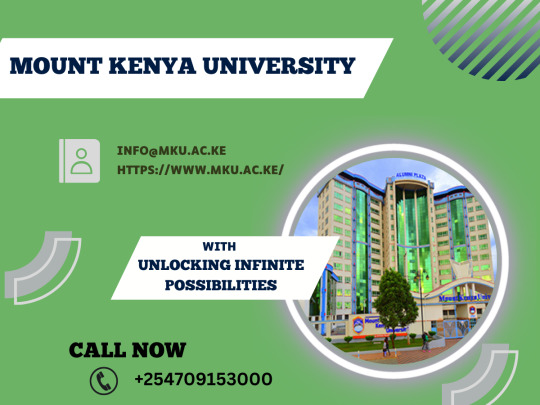
#Law program in kenya#E-learning portal in kenya#College of graduate studies and research#Mku academic programmes#Top reasons to join mku#Bachelor of pharmacy in kenya#Top medical schools in east africa#Best university for international students
0 notes
Text
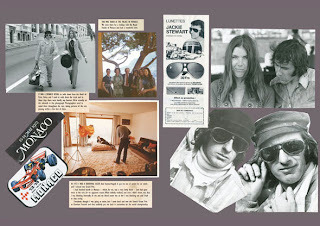

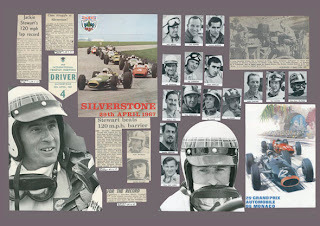
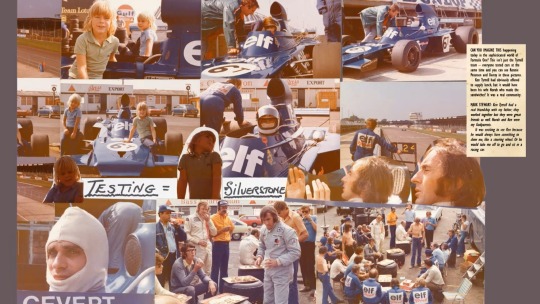
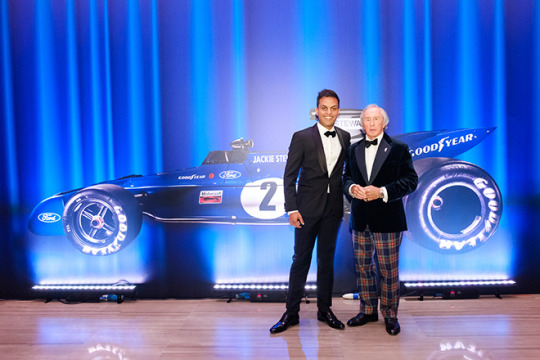

Happy birthday to former formula one racing champion Jackie Stewart wo turns 84 today.
Born John Young Stewart in Milton Dunbartonshire in 1939, Jackie, as he became known, attended Hartfield primary school in the nearby town of Dumbarton going on to the local academy in the town.
Jackie experienced learning difficulties owing to undiagnosed dyslexia, and due to the condition not being understood or even widely known about at the time, he was regularly berated and humiliated by teachers and peers alike for being “dumb” and “thick". Stewart was unable to continue his secondary education past the age of 16, and began working in his father’s garage as an apprentice mechanic. He was not actually diagnosed with dyslexia until 1980, when his oldest son Mark was diagnosed with the condition. On learning that dyslexia can be genetically passed on, and seeing very similar symptoms with his son that he had experienced himself as a child, Stewart asked if he could be tested, and was diagnosed with the disorder, by which time he was 41 years old. He has said: “When you’ve got dyslexia and you find something you’re good at, you put more into it than anyone else; you can’t think the way of the clever folk, so you’re always thinking out of the box.“
Jackie began testing race cars in 1961. Showing his skill and raw pace, Stewart quickly worked his way up the ranks before grabbing s drive in the 1964 Formula Three Championship for Tyrell. In his debut race at Snetterton, Jackie pulled out a 25 second lead within two laps and went on to win the race comfortably, 44 seconds in front of his closest rival. Becoming a Formula Three Champion on his debut season, the offers from Formula One came thick and fast. Discussing how he maximised success at every opportunity in the early stages of his career, Jackie delivers thought provoking ideas as an after dinner speaker that are relatable to sporting and business environments alike.
Jackie’s first race in an F1 car was for Lotus in December 1964 in South Africa, by the end of his first season, Stewart had finished his rookie season third in the World Drivers’ Championship, proving his potential as a future World Champion.
1966 triggered Jackie’s lifelong fight for better safety in his sport. Following a crash at the 1966 Belgian Grand Prix, Jackie was left trapped in his overturned BRM soaking in fuel. With no tools to help him, stewards had to wait for other drivers Hill and Bondurant to help after borrowing a spanner from a spectator. From now on, Jackie would tape a spanner to his steering wheel, travel to races with his own doctors whilst his team supplied a medical truck for the benefit of all. A hugely passionate subject for Jackie, driver safety can feature heavily in his talks as a motorsport speaker. The harsh reality of danger in his day makes for a compelling insight into the sport and how far things have come since then.
Stewart became Formula One World Champion in 1969 in a Matra MS80 before going on to win the 1971 and 1973 World Championships for Tyrell. A hugely talented racing driver, Jackie left a legacy of increased in-car safety as well as drastic improvements to the layout and design of tracks, all in the name of limiting risk to drivers.
Jackie's crash helmet was white, with the red, green, blue, white and yellow Stewart Royal Tartan surrounding the top.
In 2021 Jackie set up the charity Race Against Dementia, his wife Helen had been diagnosed with frontotemporal dementia, he believes that the application of Formula1’s technology and out of the box thinking could bring about earlier solutions to society coping with dementia. The couple are childhood sweethearts and have been married since 1962. Jackie recently spoke about his friend, Sean Connery, revealing that he had been ravaged with dementia during his final two years of his life.
The 27-time Grand Prix winner remains a regular visitor to the F1 paddock, and also to Goodwood's annual events that commemorate the history of the sport and which give the F1 legend a change to savour once again the thrills of racing onboard one of his period cars.
22 notes
·
View notes
Text
Japan trip

I love meeting different people on my trips whenever I go anywhere. There are so many stories out there of people living their lives to the fullest and trying to enjoy every moment, below are just a few of the people I met on my trip.
A California couple, Sam and Eric, from The Bay. They left their jobs to travel in Asia for 6 months and Europe for 3 months. Both in their late 20's. Met in Tokyo at hostel, and we shared a room.
An Australian guy, Eddie, cross country, traveling for 4 months. He pent a month in China and a month in South Korea. Lives off grid and doesn't do social media. Met in Tokyo.
2 college age German dudes who are in Japan for 1 week to party. Met in Tokyo.
Feeli an Italian woman, a financial advisor who owns her own business, lives in Hong Kong, traveling to Seoul in 1 week, spending 1 week around Japan. She has been here many times. She used to be a musician who did house music. Celebrating her 35th birthday with a trip to Japan. Met in Tokyo at bar and spent 2 hours chatting about what each of us did on our travels and our lives.
Rob, a British guy, works on projects. This was a last-minute trip, he bought a ticket 2 days ago, and studied for trip on airplane ride over. Met on Bullet train from Kyoto to Osaka.
Chiyo, a Japanese girl who has been working at hostel for 8 months and is leaving to be a full-time time safari guide in South Africa in 2 days. She went to college for veterinary work and graduated in 2021. Met at Hostel in Tokyo and chatted over breakfast 2 different days during my stay.
Frederick, a New Zealand guy, works and travels a lot, just came from Scotland and spending time in Japan. Met in Osaka.
Aiko, a Japanese girl, studied in PA and lived there for 1½ years. Moved back to Kyoto last year and is a travel tour guide and English teacher. Met at Piece Hostel in Kyoto and got lunch at Ramen spot. She has family in MA still, wants to travel to U.S again, not sure when she'll be able to.
Hilda, a polish girl spending 6 weeks in Japan and works in a bank, lived in Japan for a year and speaks it fluently, solo traveler. From a small city in Poland with population of 100k. Met at the beginning of night walk at Fushimi Inari Shrine in Kyoto when she asked me to take her photo, walked up to the top and to the bottom chatting about what we do and our trips. Turning 29 in 2 days was going to spend it in Tokyo.
6 people all from Indianapolis traveling in Japan, they did reverse trip, Osaka, then Kyoto, then Japan, met them at tattoo shop we were all waiting to get tattooed, they worked as a veterinarian, e-medical project manager, electrician, school teacher, and welder. Met in Kyoto at Tsink tattoo.
Riku, Japanese older man who opened his own bar and was DJ, had been doing it for 25 years and spent time dj'ing in countries all around from Africa, to Europe, and U.S. Met at his bar, Bar Music, in Kyoto.
Aya, a Japenese girl traveling across the country, she just graduated college and is from Hiroshima, met at cooling station for Bamboo Grove in Osaka.
Thomas, a Canadian guy, traveled 6 weeks with Japanese wife and stayed with her parents in Shanghai, they just spent 6 months cross country working / traveling in Canada in an RV. Met on plane ride back from Tokyo.
So many stories. The world is an enormous place. I wrote so much on my trip that I'll share soon.
0 notes